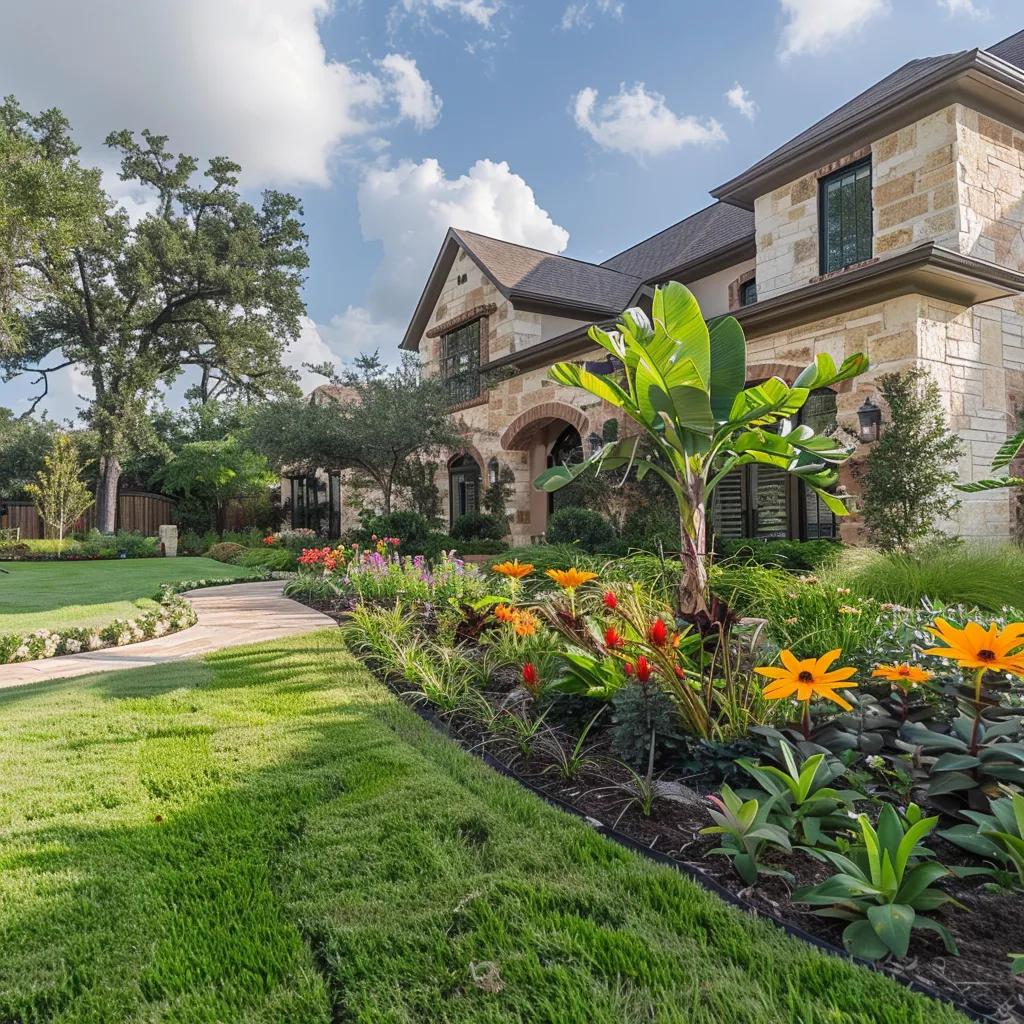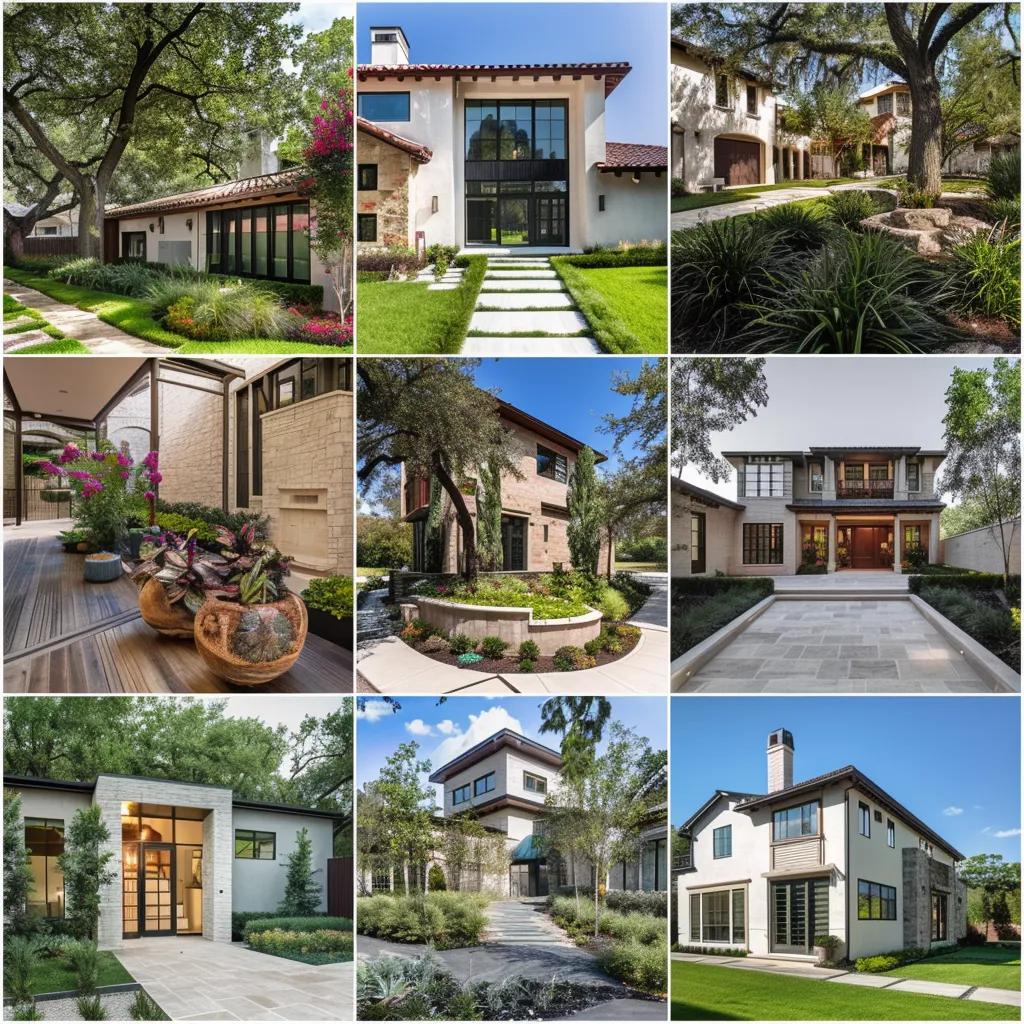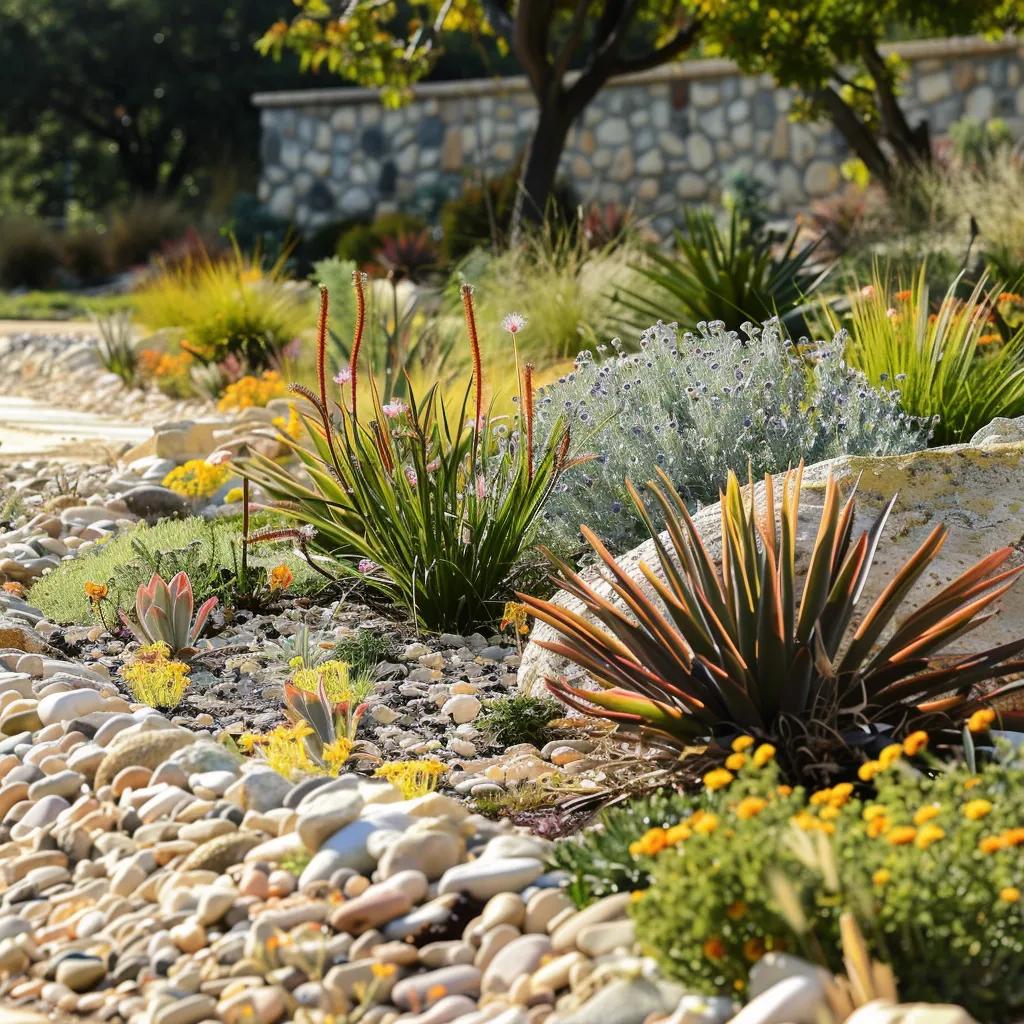
Transform Your Home with Custom House Plans Landscaping Tips
Designing a custom home offers the rare opportunity to shape not only the interior but also the outdoor spaces that will frame your daily life. The right landscaping plan doesn’t just decorate your property, it completes it, tying the architecture to its surroundings and creating a lasting first impression. By blending the home’s style with thoughtful plant selections, functional hardscapes, and climate-smart features, you can achieve a seamless flow from the front curb to the backyard retreat. In this guide, you’ll discover practical strategies for aligning your house plans with landscaping from the very start, ensuring every pathway, planting bed, and outdoor living area feels intentional, inviting, and perfectly suited to your environment.
Key Takeaways
Plan landscaping at the same time as your custom house design.
Align outdoor spaces with your home’s architecture for a cohesive look.
Include hardscaping features early for function and flow.
Choose plants suited to your local climate for easier maintenance.
Connect indoor and outdoor spaces for a seamless living experience.
Use sustainable landscaping practices for long-term benefits.
How Do Custom House Plans Influence Landscaping Choices for Stunning Curb Appeal?

Your custom house plan sets the foundation for every landscaping decision. Rooflines, elevations, and entry points influence where pathways lead, how plants frame the home, and where outdoor focal points belong. When landscape planning happens alongside the home’s design, you can ensure pathways follow the home’s natural lines, planting beds complement façade materials, and outdoor areas feel intentionally connected.
To achieve this harmony:
Match hardscape layouts to the home’s geometry for a smooth visual flow.
Balance the scale of built structures with plant groupings for proportion and interest.
Position outdoor living spaces to take advantage of natural breezes and sunlight.
Integrate drainage solutions into grading plans from the start.
This early alignment creates a unified outdoor environment that complements your home’s architecture and grows more beautiful over time.
What Architectural Styles Work Best with Complementary Landscaping?
Pairing your home’s architectural style with the right landscaping creates a cohesive, polished look. For example, modern homes often shine with clean, geometric plantings and crisp paver patterns, while Mediterranean-inspired designs feel complete with warm-toned stone, terracotta planters, and drought-tolerant foliage.
Style-based landscaping ideas include:
Contemporary: Use sleek lines, structured plant beds, and minimalist hardscapes.
Mediterranean: Pair warm stucco and stone with lavender, rosemary, and olive trees.
Ranch-style: Incorporate expansive lawns, large shade trees, and open garden beds.
Farmhouse: Add rustic wood accents and native grasses for a welcoming, natural feel.
Matching style to plant and material choices ensures your landscape enhances—not competes with—your home’s character.
How Does Site Analysis Shape Landscaping Decisions?
A thorough site analysis ensures your landscaping thrives long after installation. Examining soil type, slope, drainage, and sun patterns helps determine the best placement for patios, lawns, garden beds, and trees. It also prevents issues like erosion or plant failure down the road.
Key considerations include:
Identifying natural water flow and erosion-prone areas.
Choosing plants suited to your soil type and drainage capacity.
Mapping sun and shade patterns to match plant needs.
Positioning wind-resistant plants or shade structures where needed.
By designing with site conditions in mind, you create a functional and resilient outdoor space that complements your home.
Why Is Indoor-Outdoor Flow Essential?
A seamless connection between indoor and outdoor spaces enhances comfort, usability, and visual appeal. Aligning flooring, sightlines, and design details helps extend the home’s style into its outdoor living areas.
Ways to achieve this flow include:
Using similar or complementary flooring materials inside and out.
Directing interior views toward garden focal points or water features.
Designing covered patios or loggias as true extensions of interior living rooms.
A strong indoor-outdoor connection makes your home feel larger, more inviting, and perfectly integrated with its surroundings.
What are the top hardwood elements for elevating curb appeal?

Hardscaping provides structure, durability, and visual anchors that define circulation, outdoor rooms, and edges. Integrating patios, pathways, and retaining walls into your custom plan strengthens first impressions and guides visitors toward entryways or view corridors.
This structural framework anchors plantings and lighting elements, ensuring that each outdoor zone feels intentional and cohesive.
Which Materials Create Lasting Pathways, Patios, and Retaining Walls?
Selecting robust materials enhances longevity and style. Natural stone brings timeless elegance, concrete pavers offer precision and pattern flexibility, and decorative gravel supports permeable drainage.
Choose natural stone for durability and timeless elegance.
Employ concrete pavers in modular patterns for modern visual impact.
Install decorative gravel to facilitate rainwater percolation and low maintenance.
Thoughtful material choices ensure that your hardscape elements age gracefully while reinforcing the home’s architectural character.
How Do Hardscaping Features Enhance Visual Impact and Functionality?
Hardscaping features organize outdoor spaces by guiding movement, framing garden rooms, and stabilizing slopes. They also anchor lighting fixtures and seating areas, enhancing both utility and ambiance.
Define walkways to create intuitive visitor flow.
Construct raised terraces to support layered plantings and seating nooks.
Install retaining walls to manage grade changes and reduce erosion.
Leveraging these functional elements lays a strong foundation for lush softscaping and integrated outdoor living features.
How Can Softscaping Bring Vibrant Beauty to Custom Homes in Houston?

Softscaping adds life, color, and texture to your property, turning open spaces into welcoming, dynamic environments. By selecting plants suited to your climate and using thoughtful layering, you can create landscapes that stay attractive year-round while being easier to maintain.
Key softscaping elements:
Native plants – Adapted to local conditions, they conserve water and require minimal upkeep.
Trees – Provide shade, reduce heat, and protect outdoor areas from excessive sun exposure.
Shrubs and flowers – Offer seasonal blooms and rich textures for visual interest.
The right plant choices not only frame architectural features but also enhance the overall curb appeal of your home.
What Native and Drought-Tolerant Plants Work Best?
Climate-adapted plants thrive with less water and care, making them ideal for sustainable landscaping. Popular options include:
Pink muhly grass – Airy plumes in fall that add movement and color.
Texas sage – Silvery foliage with vibrant purple blooms.
Yaupon holly – Evergreen structure and seasonal red berries.
Lantana – Bright flowers that attract pollinators and handle heat well.
Incorporating these plants ensures your landscape remains vibrant and resilient, even during dry periods.
How Does Layering Improve Curb Appeal?
Layering plants of varying heights creates depth and dimension, guiding the eye naturally through the landscape.
Place taller trees as a backdrop or canopy.
Use shrubs of different textures and colors in the mid-layer.
Add groundcovers or low plants to soften edges and fill spaces.
Stagger bloom times to maintain color across seasons.
This technique transforms flat or open yards into visually engaging, balanced compositions.
What Is Xeriscaping and Why Is It Valuable?
Xeriscaping focuses on water-wise landscaping, combining drought-tolerant plants, efficient irrigation, and smart design to reduce outdoor water needs.
Use rock mulch to minimize evaporation.
Group plants by water requirements for efficient irrigation.
Choose permeable paving to improve drainage and replenish groundwater.
The result is a sustainable, low-maintenance landscape that conserves resources while still offering beauty and function.
How Do Water Features and Outdoor Lighting Enhance Custom Home Landscaping?

Water features and lighting infuse ambiance, guide circulation, and heighten safety after dark. A thoughtfully illuminated fountain or tranquil pond transforms a driveway or entry courtyard into a signature statement.
Introduce a central fountain to anchor an entry courtyard.
Embed uplights beneath specimen trees to dramatize seasonal foliage.
Install path lights along walkways for safe nighttime navigation.
Combining reflective water surfaces with layered lighting amplifies both aesthetic and practical value.
What Types of Water Features Create Tranquil Outdoor Spaces?
Water features vary from minimalist wall fountains to naturalistic ponds. Each type introduces sound, movement, and cooling effects that enrich sensory engagement.
Wall Fountains offer compact drama with gentle cascades.
Freestanding Basins create reflective pools that mirror architecture.
Natural Ponds integrate aquatic plants and fish for ecosystem diversity.
Rain Chains channel roof runoff into decorative basins or gravel beds.
Selecting the right feature establishes serene focal points that complement your custom plan’s proportion and style.
How Does Outdoor Lighting Improve Curb Appeal and Security?
Outdoor lighting elevates curb appeal by accentuating textures and guiding sightlines while enhancing safety with well-lit pathways and entry points.
Illuminate driveways with low-glare LED bollards to define edges.
Uplight architectural façades to highlight texture and color.
Integrate motion-sensor lights near service entrances for security.
Accent garden beds with soft-wash fixtures to showcase foliage.
Strategic illumination transforms your landscape into a secure and inviting environment after dusk.
Why Is Sustainable Landscaping Important for Houston Custom Homes?

Sustainable landscaping reduces resource consumption and fosters biodiversity while preserving the beauty of custom home exteriors. By prioritizing eco-friendly materials and native species, homeowners can enjoy lower maintenance and long-term savings.
Adopt drip irrigation to target root zones and minimize evaporation.
Harvest rainwater with cisterns to supplement watering needs.
Select permeable paving to reduce stormwater runoff.
Embedding sustainability within your design enhances environmental stewardship and aligns with modern building values.
How Do Water Conservation Practices Benefit Custom Home Landscapes?
Implementing water-saving techniques ensures plant health and cost savings. Drip systems, rain sensors, and moisture probes deliver precise moisture levels without waste.
Install drip irrigation lines under mulch for deep root watering.
Program rain sensors to suspend irrigation during wet periods.
Use moisture sensors to activate watering only when needed.
Targeted watering practices reinforce plant resilience and lower utility expenses.
What Are the Advantages of Using Native Plants in Sustainable Landscaping?
Native plants support local ecosystems, reduce chemical inputs, and thrive with minimal care. Their deep root systems improve soil structure and resist drought stress.
Promote native wildflowers to attract pollinators and songbirds.
Utilize Texas-adapted grasses to stabilize slopes and prevent erosion.
Choose heritage oaks for long-term shade and carbon sequestration.
Incorporate flowering shrubs for seasonal nectar sources.
The Importance of Native Plants in Landscaping
Native plants are crucial for supporting local ecosystems and reducing the need for chemical inputs, thriving with minimal care due to their deep root systems. They also contribute to the aesthetic appeal of a landscape, offering vibrant curb appeal and seasonal interest.
How Can Low-Maintenance Landscaping Solutions Save Time and Money?
Low-maintenance strategies combine hardy perennials, artificial turf, and efficient mulching to minimize upkeep without sacrificing beauty.
Lay artificial turf in high-use recreation areas for enduring green color.
Apply organic mulch to suppress weeds and conserve soil moisture.
Plant perennial groupings to reduce annual replacements.
Automate irrigation with smart controllers to limit manual adjustments.
Streamlined maintenance frees homeowners to enjoy their landscape rather than labor over it.
How Does Custom Builder Connection Help You Find the Right Landscape Professionals?
Custom Builder Connection links homeowners with trusted home builders and landscape architects who work together from the earliest design stages through final installation. This collaboration ensures that your house plans and landscaping complement one another, creating a seamless and cohesive result.
With Custom Builder Connection, you can:
Be matched with professionals experienced in your local climate and soil conditions.
Coordinate construction and landscaping timelines for smooth project flow.
Receive ongoing support and quality checks to maintain high standards.
Working with this expert network streamlines communication, prevents delays, and delivers a unified vision for your home’s exterior.
Why Choose Vetted Professionals?
Every professional recommended through Custom Builder Connection is carefully vetted for licensure, portfolio quality, and client satisfaction. This means you work only with proven experts who bring both skill and reliability to your project.
The vetting process includes:
Reviewing portfolios to ensure relevant experience.
Verifying licenses and insurance for protection and compliance.
Checking client feedback for consistent quality and timeliness.
By partnering with qualified professionals, you can move forward with confidence and peace of mind.
How Does Custom Builder Connection Simplify the Process?
From your first consultation to the final landscape touch, Custom Builder Connection offers one point of contact, expert guidance, and curated recommendations.
Here’s how the process works:
Define your project goals and style preferences during an initial consultation.
Receive introductions to top landscape architects and builders suited to your vision.
Track milestones and progress with coordinated support every step of the way.
This approach saves time, reduces stress, and ensures your custom home’s exterior is as thoughtfully designed as the interior.
Frequently Asked Question
How early should landscaping be planned in the custom home process?
Ideally, landscaping should be considered at the same time as the house plans. This ensures outdoor spaces align with the architecture, site grading, and drainage plans.
What’s the benefit of integrating hardscaping early?
Early integration of hardscaping allows for proper placement of pathways, patios, and retaining walls before construction begins, preventing costly adjustments later.
Which plants work best for low-maintenance landscaping?
Native plants and drought-tolerant species are best for low-maintenance landscapes, as they adapt to local climate conditions and require less water and upkeep.
How can I make indoor and outdoor spaces feel connected?
Use consistent materials, align sightlines toward garden focal points, and create covered outdoor areas to blur the boundary between inside and outside.
Why is sustainable landscaping important for custom homes?
Sustainable landscaping reduces water use, supports local ecosystems, and lowers long-term maintenance, making it both eco-friendly and practical.
Conclusion
A well-planned landscape doesn’t just frame your home; it becomes an extension of it, blending architecture, nature, and lifestyle into a cohesive vision. By incorporating landscaping into your custom house plans early in the design process, you can create outdoor spaces that are both visually striking and practical for everyday living. Every detail contributes to lasting curb appeal and comfort, from selecting climate-appropriate plants to aligning hardscape features with architectural lines.
For expert guidance and access to vetted professionals who understand how to align building and landscaping goals, Custom Builder Connection offers the network and expertise to bring your vision to life seamlessly, turning blueprints into a home that’s complete inside and out.


